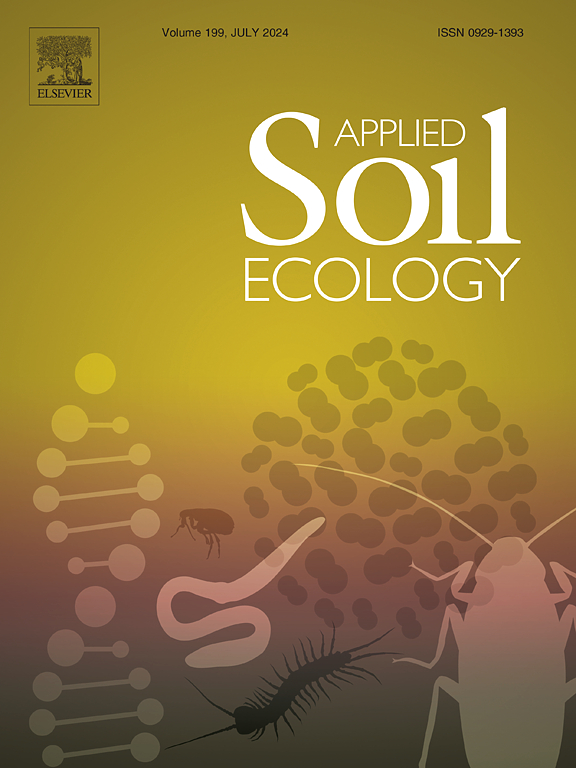12-year N addition enhances soil organic carbon decomposition by mediating microbial community composition in temperate plantations
IF 4.8
2区 农林科学
Q1 SOIL SCIENCE
引用次数: 0
Abstract
Soil respiration is a crucial contributor to atmospheric CO2 flux and microbial communities play a vital role in carbon cycling in terrestrial ecosystems. However, the response of microbial community characteristics (such as diversity and composition) and their roles in regulating soil respiration under nitrogen (N) deposition remain unclear. Here, we conducted a 12-year N addition experiment (0, 2, 5, 10 g N m−2 year−1) in a temperate plantation to elucidate the mechanisms of autotrophic respiration and heterotrophic respiration in response to environmental and microbial factors. The results showed heterotrophic respiration increased significantly only under high-N addition (10 g N m−2 year−1), and autotrophic respiration decreased significantly under moderate-N (5 g N m−2 year−1) and high-N addition (10 g N m−2 year−1). The decrease in autotrophic respiration was primarily driven by environmental factors, such as soil pH and N availability, whereas the increase in heterotrophic respiration resulted from changes in the microbial community. Fungi Leotiomycetes, Sordariomycetes, and Rhizophydiomycetes were identified as the key microbial predictors influencing heterotrophic respiration under N addition. Our work identified the role of soil microbial community composition in promoting soil organic matter decomposition under long-term N deposition. And we emphasized the importance of incorporating microbial community information into ecosystem models to improve predictions of climate‑carbon cycle feedbacks.
求助全文
约1分钟内获得全文
求助全文
来源期刊

Applied Soil Ecology
农林科学-土壤科学
CiteScore
9.70
自引率
4.20%
发文量
363
审稿时长
5.3 months
期刊介绍:
Applied Soil Ecology addresses the role of soil organisms and their interactions in relation to: sustainability and productivity, nutrient cycling and other soil processes, the maintenance of soil functions, the impact of human activities on soil ecosystems and bio(techno)logical control of soil-inhabiting pests, diseases and weeds.
 求助内容:
求助内容: 应助结果提醒方式:
应助结果提醒方式:


